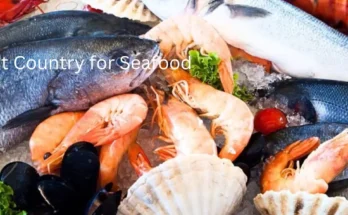Restaurant insurance helps cover losses caused by events like fire outbreaks, theft, and natural disasters. The insurance also includes protection from risks, such as customer injuries and food poisoning, that may lead to financial losses in the form of lawsuits. Errors and omissions (E&O) insurance is another type of coverage that shields restaurant owners from potential legal risks. Here’s more information about how E&O insurance works:
Explanation of E&O Insurance
Professional liability insurance for restaurants, also known as errors and o insurance, covers negligence, mistakes, or failure to perform professional services. Focus areas of this type of restaurant insurance include legal expenses and compensation for mistakes in food preparation or distribution. While general liability insurance covers bodily injury, property damage, and advertising injury, E&O insurance concentrates on professional wrongdoings.
Specific E&O Risks for Restaurants
Errors and omissions risks for restaurants involve liabilities from mistakes in food and customer services. Some of these risks include foodborne illnesses spread from improper food handling, miscommunication in taking orders, and false advertising. Incorrect pricing or ingredient claims can result in customer dissatisfaction and legal action. Errors in billing or reservations also cause issues. If a restaurant provides catering services, it faces risks like wrong event scheduling or incorrect deliveries. E&O insurance offers financial protection against claims and safeguards the restaurant’s reputation and stability.
Restaurant Staff should be trained to fulfill orders correctly to avoid issues such as customer complaints and claims. Failure to properly address food allergies and foodborne illnesses may lead to serious health consequences and liability actions. Other unintentional health code violations in a restaurant may lead to significant penalties and legal troubles. Data security attacks are also worrisome as they may expose customer data and cause violations of privacy. Contract and delivery disputes with suppliers interrupt business processes and may turn into legal issues. Each of these concerns can be addressed and minimized with the appropriate E&O insurance policy.
Common E&O Claims in the Restaurant Industry
Errors and omissions claims in restaurant operations may have many causes. One leading cause is food hygiene, which involves maintaining the hygiene of the food and the handlers to prevent the spread of diseases. Another common reason for E&O claims in restaurants is slip-and-fall cases. These accidents occur on wet or slippery floors or in areas with walkway obstructions.
Claims regarding the quality of an employee’s service can result in E&O lawsuits for a restaurant, regardless of whether the customers were pleased with the food that was served. If the server forgets to disclose food allergens and a customer has an allergic reaction, the restaurant may be liable for the accident and responsible for covering medical bills and other damages. Another instance where E&O claims may occur is employee misconduct, such as improper behavior or discrimination. Other incidents occurring on the premises, such as employees accidentally damaging customer property, also warrant compensation claims.
Another risk that E&O insurance covers is liquor liability. This coverage is needed for instances when a waiter serves alcohol to patrons who drink beyond their limit and end up causing accidents or engaging in altercations. Another common genesis of E&O claims is contractual disputes with a vendor or contractor. Other claims arise from advertising misrepresentation, where wrong advertisements or promotions can lead to customer disgruntlement and litigation. You can minimize these risks by thoroughly training employees and implementing quality control measures. Communicating clearly with the customer and documenting the transactions can also help minimize E&O risks.
Factors Affecting E&O Insurance Premiums
A restaurant’s size and revenue are key in determining its insurance premiums, with larger restaurants attracting higher premiums due to their greater risk exposure. Restaurants with good food safety policies, trained employees, and good customer relations could be in a position to pay reduced premiums. These measures show commitment towards risk management.
Restaurant owners can choose custom coverage limits and deductibles, which affects the overall rates to be paid as premiums. Increased coverage limits lead to increased premiums, while increased deductibles mean lower monthly prices. E&O protection needs to be sufficient but not too expensive, and insurance professionals can help restaurant owners create a policy that suits their situation.
Get Restaurant Insurance
Restaurant insurance provides coverage for errors and omissions that can result in lawsuits. Once you have this insurance, you won’t have to worry about the financial impacts of professional mistakes such as wrong food orders, incorrect menu details, or slip-and-fall injuries. Contact an insurance provider today to learn more about getting E&O coverage.



